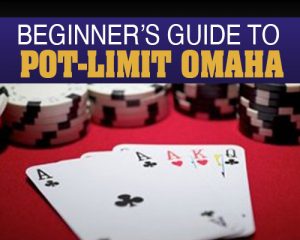What Is The Difference Between Omaha And Texas Hold Em
- What Is The Difference Between Omaha And Texas Hold Em
- What Is The Difference Between Omaha And Texas Hold'em
- Is Omaha Better Than Hold'em
Omaha and Texas Hold'em are currently the two most popular poker games in the world, both in live casinos and at online poker sites. They are both actually forms of 'Hold'em', meaning that in each game the players have hole cards that they combine with community cards to make the best five card poker hand.
The games are similar in structure, as the only real difference is that in Texas Hold'em you receive two cards and can use any combination of those cards and the five community cards, and in Omaha you receive four hole cards and have to use two of your hole cards with three community cards (Learn more about Omaha Poker Starting Hands). Also, Hold'em is always played in a High format, but Omaha is often played in a High/Low split game.
- The basic differences between Omaha and Texas hold 'em are these: first, each player is dealt four hole cards instead of two. The betting rounds and layout of community cards are identical.
- The main difference between Texas Hold’em and Omaha Poker, another popular variant, is the number of cards you receive. With Omaha Poker you receive four cards instead of two cards.
Similarities Between the Games
There are tons of similarities between Texas Hold'em and Omaha Hold'em. The main difference is the fact that both games have hole cards that are used in combination with community cards. Also, the structure of the games are exactly the same - players receive cards, bet, see the flop (the first three community cards), bet again, see the turn (fourth community card), bet again, see the river (last community card), bet again, and have a showdown.
Texas hold’em is the most popular poker game in the United States and possibly even the rest of the world. But in many gambling destinations, especially in Europe, Omaha is becoming increasingly popular. These are both “hold’em” games, by the way—Omaha’s full name is “Omaha hold’em. Differences Between the Games The main difference between Omaha and Texas Hold'em is the number of hole cards you receive, and how you can use them. In Texas Hold'em you receive two hole cards.
Differences Between the Games
The main difference between Omaha and Texas Hold'em is the number of hole cards you receive, and how you can use them. In Texas Hold'em you receive two hole cards, and can use one, both, or none to make the best five card poker hand. In Omaha you receive four cards, and must use two of them. For example, if you have a hand of 2-3-4-5 and the board is A-K-K-8-7, contrary to popular belief you do not have an Ace-Five straight. Your best hand would be K-K-A-5-4 because you would have to use the four and five from your hand.
Differences in Strategy
If you've previously played Texas Hold'em, you need to forget everything you know about Hold'em to become a successful Omaha player. Here are some of the major strategy differences between the two games:
Relative Hand Strength
The most noticeable difference between Hold'em and Omaha is the relative hand strength for each game. In Hold'em you'll commonly see hands like a pair of Aces or two pair winning at showdown. However, when you play Omaha you'll notice that winning hands at showdown are more commonly flushes, straights, and full houses. The main idea is that you shouldn't treat top pair or even two pair the same in Omaha as you would in Hold'em.
High/Low Split
Another big difference between Hold'em and Omaha is the fact that Omaha is often played in a High/Low version of the game, while Hold'em is always played in the High version. If you end up in a high/low Omaha game, make sure to remember that the pot is actually split in half - there is a High pot and a Low pot. To learn more about Omaha high/low, read our Introduction to Omaha Hi-Lo.

Drawing Power
In Hold'em draws are fairly common, but in Omaha they are a hugely important part of the game. Since each player has four cards major draws will be much more common, so if you have a made hand on the flop you need to bet it extremely hard to try to defend your hand.
More Omaha Poker Strategy:
Texas hold’em is the most popular poker game in the United States and possibly even the rest of the world. But in many gambling destinations, especially in Europe, Omaha is becoming increasingly popular.
These are both “hold’em” games, by the way—Omaha’s full name is “Omaha hold’em,” although I’ve never seen anyone actually refer to it as such, other than maybe in the Wikipedia article.
What these games have in common is the use of “hole cards” and “community cards.” If you’re reading this, you’re probably familiar enough with Texas hold’em to know that each player gets 2 cards face down. The rest of the hand consists of 5 cards in the middle of the table, which all the players get to use to complete their hands.
It’s the use of the community cards that makes these games fall into the broad category of “hold’em” games. This post focuses mostly on the differences between Omaha and Texas hold’em, but I also cover some other hold’em games like Pineapple and Crazy Pineapple.
The Rules Differences Between Omaha and Texas Hold’Em
If you’ve never played Texas hold’em or watched it on television, here’s a quick overview of how it works.

Each player gets 2 cards. These are his hole cards. Then there’s a round of betting.
What Is The Difference Between Omaha And Texas Hold Em
After that round of betting, 3 cards are dealt in the middle of the table. That’s called “the flop.”
After the flop is dealt, there’s another round of betting.
Following that, another community card, “the turn,” is dealt. There’s another round of betting.

Finally, one final card, “the river,” is dealt. There’s a final betting round after the river.
During the betting rounds, players can bet, call, check, fold, or raise. If a player folds, he’s out of the action for the rest of the hand and forfeits any claim to the pot.
After all the rounds of betting, any remaining players compare their hands during “the showdown.”
The winner is determined by who has the best 5-card hand using the standard rankings of poker hands. You can use any combination of cards in your hand and community cards to make up your final hand. You can use one hole card, 2 hole cards, or even no hole cards—playing just the 5 cards on the board.
Omaha is played in almost exactly the same way, but you have 2 major differences.
- You start with 4 cards instead of 2
- You must use 2 cards from your hand and 3 cards from the board to make up your final hand
Those are literally the only 2 differences between Texas hold’em and Omaha, but they are major differences.
But Wait… There Are More Ways to Play Omaha Than There Are to Play Texas Hold’Em
Omaha is often played where the high hand wins the pot at the end, but it’s more often played as “Hi Lo” or “Omaha 8 or Better.”

In this variation, the highest hand must split the pot with the lowest hand, but to qualify, the low hand must have no cards in it higher than 8. The best possible low hand is A2345.
It’s possible for a player to win both the high and the low, in which case that player is said to have “scooped” the pot.
The worst possible situation is to tie someone for the low hand, in which case you split half the pot. This is called “getting quartered.” It’s possible that if you get quartered, you lose money even though you won some of the pot.
This changes the strategy for the game dramatically, for obvious reasons. Your goal in Omaha 8 is to scoop the pot every time you play.
Some people have a little bit of trouble identifying the best possible qualifying low hand. There’s an easy way to accomplish this, though.
You list the cards in the low hand from highest rank to lowest, like 87,654 or 54,321. Treat that as a 5-digit number. The lower number wins.
For example, 87,653 is lower than 87,654, so it would win for the low hand. 87,621 would be even better.
Betting Limit Differences
Texas hold’em and Omaha are both often played as limit games or pot limit games. It’s possible to play Omaha as a no-limit game, too, but it’s rarely played that way.
Here are the differences.
In a “limit” game, the size of your bets must be done in specific increments that can’t exceed the limits. For example, in a $3/$6 Texas hold’em game, bets and raises are limited to $3 in the first 2 rounds of betting. They’re limited to $6 in the final 2 rounds of betting.
In a “pot limit” game, the size your bets still must be done in specific increments, but the maximum bet is the same as the amount of money in the pot. This is actually not hard to calculate. If there’s $100 in the pot, you can bet up to $100. This is the most common way Omaha games are played.
In a “no limit” game, the size of your bets has no maximum other than how many chips are in front of you. Like I mentioned earlier, no limit is common with Texas hold’em games but rare with Omaha games.
Strategy Differences and Considerations Between Omaha and Texas Hold’em
The first important strategy difference between Omaha and Texas hold’em is remembering the rules. Neophyte Omaha players often make the mistake of thinking they can use any combination of the cards in their hand along with any combination of cards from the board. This leads to major mistakes, lost money, and embarrassing moments.
Steve Badger is the best Omaha player I know, and he simplifies the way to remember this with the following saying:
“Always two. Always two.”
If you remember that you always must use 2 cards from your hand—not 1, 3, or 4—you’ll be able to remember that you can only use 3 cards from the board. Everyone knows that the final hand is a 5-card hand.
Being able to recognize the nut low is another crucial skill if you’re going to play Omaha 8. The “nut” low is the best possible low hand given the cards on the board. And with some boards, a low hand is impossible.
Having an A2 in your hole cards will enable you to hit the nut low if the rest of the board works with that.

But if all the cards on the board are higher than 9, or even if there aren’t 3 cards below 8 on the board, a low hand isn’t possible.
Being able to recognize and react accordingly to such situations is crucial to winning at Omaha.
Another thing to remember about Texas hold’em versus Omaha is this: the more cards you’re able to see, the less of a game of chance it is. Skill is more important in Omaha than in Texas hold’em. You’re less likely to get lucky because the smart players have and use more information in Omaha.
Also, as a rule of thumb, the more cards you have access to, the tighter you should play. In Omaha, it’s easy to see lots of potential in your 4 hole cards. Many novice players get into too many hands because of this.
The reality is that the best strategy in Omaha, especially Omaha 8, is to play fewer hands than you would in Texas hold’em.
Also, I’ve written before about how tight aggressive poker is a winning strategy. This is even truer in Omaha. You won’t play many hands, but when you do, make the most of it by putting money into the pot with bets and raises.
Omaha offers an edge over Texas hold’em for skilled players. You can be a great Texas hold’em player and have a big losing streak. You can’t be a lousy Omaha player and expect to have much of a winning streak. Skill is just too important.
What Is The Difference Between Omaha And Texas Hold'em
You’re also likelier to find players who play poorly at the Omaha tables. They might just be trying the game out. If so, you can profit from those players. This is only one of the reasons it’s worthwhile to become an expert Omaha player.
Other Variations Like Pineapple and Crazy Pineapple
In Texas hold’em, you get 2 hole cards. In Omaha, you get 4 hole cards.
There’s a middle ground, though. In Pineapple, you get 3 hole cards.
But in Pineapple, you’re still required to use 2 and only 2 cards from your hand. You must discard one of the 3 cards.
When you choose which card to discard is what marks the difference between Pineapple and Crazy Pineapple.
In a regular Pineapple hold’em game, you discard one of those 3 cards before the first round of betting.
In Crazy Pineapple, you don’t have to decide which card to throw away until after the betting round following the flop.
There’s even a variation called Lazy Pineapple where you get to keep all 3 cards until all the betting rounds are done. At that point, you still must discard one of those 3 cards.
The strategy for Pineapple is midway between that of Texas hold’em and Omaha. You have more information in Pineapple than you have in Texas hold’em, but not as much as you would have in Omaha.
Bet, fold, and raise accordingly.
Conclusion
Is Omaha Better Than Hold'em
Texas hold’em and Omaha are closely related games, but you’d be surprised at how many Texas hold’em players don’t know how to play Omaha. To add to the confusion, Omaha is often played in high format and in hi-lo format, which adds more strategy considerations to the games.
It’s worth learning to play Omaha if you’re a serious player, though. The game rewards skill sooner and more consistently than Texas hold’em, which has more of a luck element. Omaha also rewards patience and tight play.
You can make big profits from Omaha by taking advantage of the many players new to the game that you’ll find.
And if you’re looking for a fun variation to throw into your weekly home poker game, consider dealing some Pineapple. I bet a lot of the players in your home game have never even heard of Pineapple hold’em.